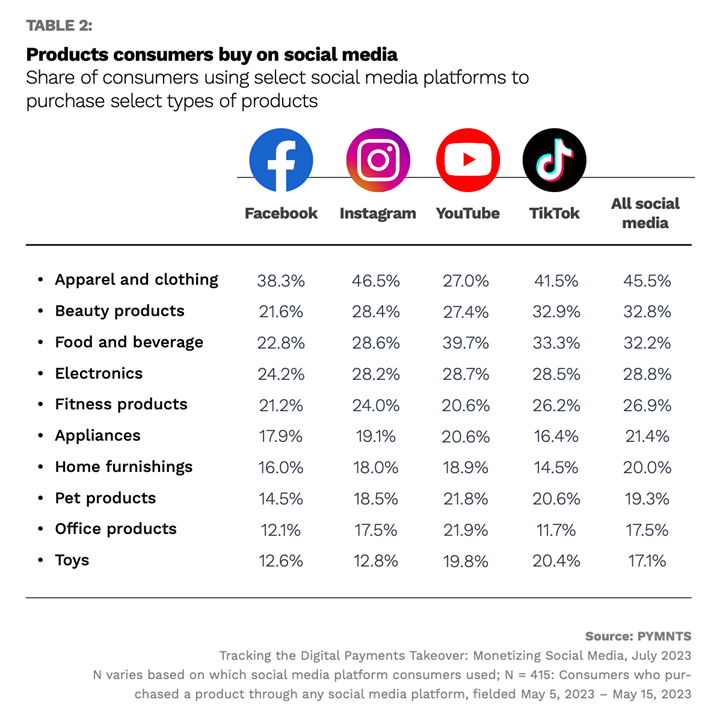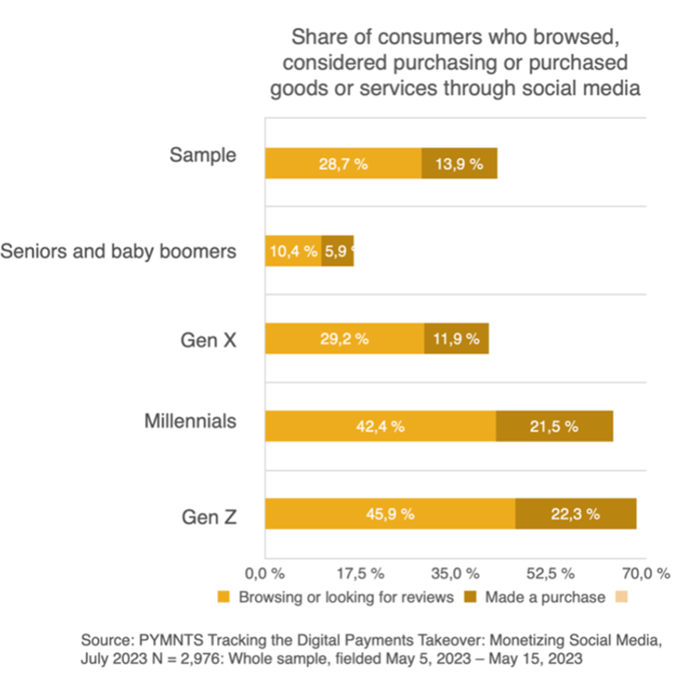Year in Review: Social Media eCommerce Has Not Yet Caught On

Social platforms such as TikTok, Facebook and Instagram have made it quicker and easier for consumers worldwide to share their shopping stories and start retail trends.
It is little wonder, then, that retailers and influencers are eager to harness this power for themselves. The development of eCommerce in social media is still progressing slowly, however, as even though 43% of consumers browse these platforms to find goods and services, only 14% buy goods and services via social media.
The digitalization of retail product purchases on social networks is occurring across all retail categories but at a different pace. On one hand, more established categories are expanding steadily, with a share of consumers using social media for shopping that exceeds 30% in some categories such as beauty and clothing. By contrast, others are catching up by growing faster, creating business opportunities that are worthy of exploring. Examples include pet products or toys.
Shopping Hesitancies
PYMNTS Intelligence data found that trust is the top reason for this gap between browsing and pressing the “buy” button. Despite the potential of social media as a retail platform, many consumers avoid making purchases via social media due to security concerns. The study revealed that 37% of consumers who do not transact on social media are skeptical about sharing their personal data safely, while 31% doubt the legitimacy of sellers on social media platforms. Another common reason consumers don’t transact on social media is the apprehension regarding product quality, cited by 27% of respondents.
Product Categories and Social Platforms
What people buy on social media is directly related to the strengths of the different social channels. Consumers buy clothing on Instagram, beauty products on TikTok, and food and beverages on YouTube. These are the top three categories that consumers plan to shop on social media in the next 12 months, the study found.

Pet products and toys are expected to record higher growth in social media shopping in the next year as well. The popularity of pet videos and dedicated profiles on Instagram and Pinterest, as well as the proliferation of pet shops and small brands on different digital channels, helps explain this trend. The toys category, meanwhile, is fueled by the extended consumer trend to buy toys online out of season to get better prices and special discounts.
The Generation Gap
According to the study, 68% of Generation Zers searched for products on social media, and 22% ultimately completed a purchase, marking the highest shopping rate on social media across all generations. It’s not surprising that Gen Z consumers are the most inclined to use social media because they find products more attractive there, something that makes this generation different from any other. The shopping rate of this generation is similar to that of millennials, double that of Gen Xers, and four times that of baby boomers and seniors. This trend doesn’t appear to be temporary, as 3 out of 4 Gen Z consumers plan to make purchases on social media, whereas, among the overall sample, the share is less than half.

Payment Methods
Another key finding from the study is that consumers have a broad variety of payment methods at their disposal when it comes to completing transactions on social media. Credit cards and debit cards together stand out as the primary choice, used by more than half of social media shoppers. PayPal follows at 18%, and cryptocurrency stands at nearly 8%. Digital wallets (such as Apple Pay and Amazon Pay) account for nearly 11% of consumers’ latest social media in-app purchases.
Social media shopping may still be in its early stages. To push further, merchants must give shoppers quick, easy ways to go from browsing to paying to win them over. Building trust and addressing quality and transparency concerns will be crucial for retailers to drive more sales on social media. By understanding the payment methods consumers use, merchants can leverage social media to drive sales in 2024 via a more seamless shopping experience.

